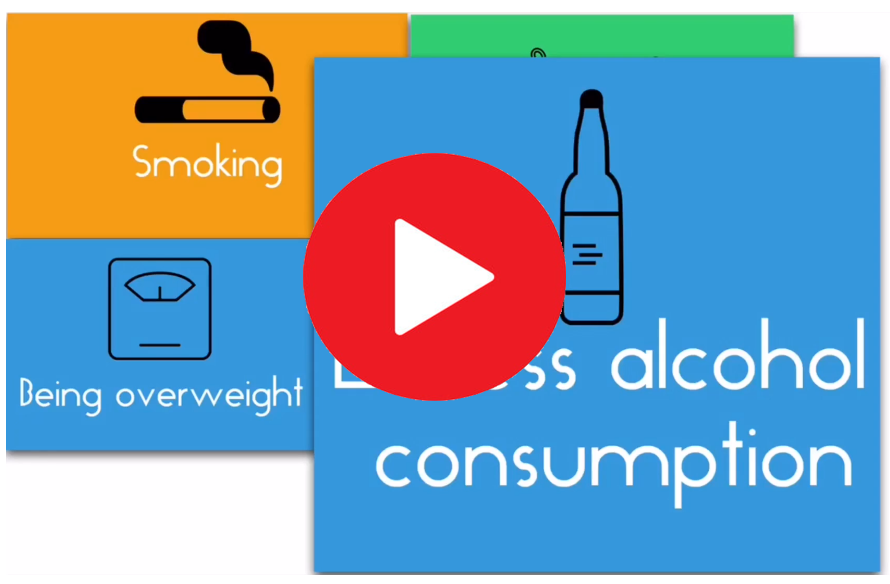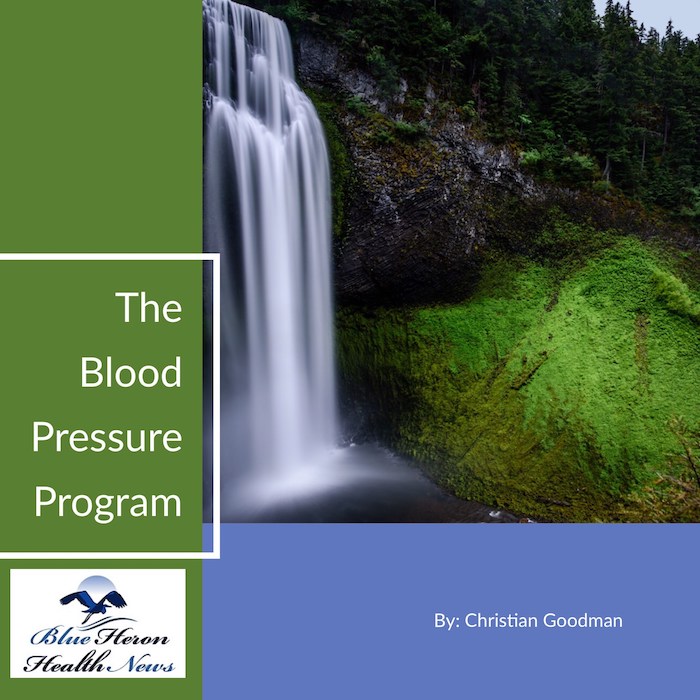The Bloodpressure Program™ By Christian Goodman The procedure is a very basic yet effective method to lessen the effects of high blood pressure. To some people, it sounds insane that just three workouts in a day can boost fitness levels and reduce blood pressure simultaneously. The knowledge and research gained in this blood pressure program were really impressive.
Managing Medication Adherence in Hypertension
Medication adherence is crucial in the management of hypertension to achieve optimal blood pressure control and reduce the risk of complications such as stroke, heart attack, and kidney disease. However, non-adherence to antihypertensive medications is a common problem, affecting up to 50% of patients. This comprehensive guide explores the challenges of medication adherence in hypertension, the factors influencing adherence, and strategies to improve it.
The Importance of Medication Adherence in Hypertension
Adherence to prescribed antihypertensive medications is essential for:
- Achieving Blood Pressure Control: Consistent medication use is necessary to maintain blood pressure within the target range. Poor adherence can lead to uncontrolled hypertension, increasing the risk of cardiovascular events and organ damage.
- Reducing Cardiovascular Risk: Long-term adherence to antihypertensive therapy reduces the risk of heart attack, stroke, heart failure, and death from cardiovascular causes.
- Preventing Disease Progression: In patients with coexisting conditions like diabetes or chronic kidney disease, maintaining blood pressure control through medication adherence can slow the progression of these diseases and prevent complications.
Factors Influencing Medication Adherence
Several factors can influence a patient’s adherence to antihypertensive medication, including:
1. Patient-Related Factors
- Understanding of Hypertension: Patients with a limited understanding of hypertension and its risks may not fully grasp the importance of adhering to their medication regimen.
- Beliefs and Attitudes: Patients who perceive hypertension as an asymptomatic condition may not see the need for regular medication. Others may believe that they only need to take their medication when they feel unwell.
- Forgetfulness: One of the most common reasons for non-adherence is simply forgetting to take medications, especially in patients with complex regimens or cognitive impairments.
- Fear of Side Effects: Concerns about actual or potential side effects can lead to intentional non-adherence, where patients reduce or skip doses to avoid adverse effects.
2. Medication-Related Factors
- Complexity of Regimen: Patients on multiple medications or those requiring frequent dosing may find it difficult to maintain adherence.
- Cost of Medications: High out-of-pocket costs for medications can be a significant barrier, leading patients to skip doses or discontinue therapy altogether.
- Side Effects: Unpleasant side effects, such as dizziness, fatigue, or sexual dysfunction, can discourage patients from continuing their medication.
3. Healthcare System and Provider-Related Factors
- Patient-Provider Relationship: A strong, trusting relationship with healthcare providers can improve adherence. Poor communication or lack of follow-up can lead to misunderstandings and reduced adherence.
- Access to Healthcare: Limited access to healthcare services, including difficulties in obtaining prescriptions or attending follow-up appointments, can hinder adherence.
- Prescription Practices: Prescribing long-term supplies of medication, such as a 90-day supply, can improve adherence by reducing the frequency of pharmacy visits.
Strategies to Improve Medication Adherence
Improving medication adherence in hypertension requires a multifaceted approach, addressing patient education, regimen simplification, and support systems.
1. Patient Education and Empowerment
- Provide Clear Information: Educate patients about hypertension, its risks, and the importance of medication adherence. Use simple, non-technical language and visual aids to enhance understanding.
- Involve Patients in Decision-Making: Engage patients in discussions about their treatment options, allowing them to express concerns and preferences. Shared decision-making can increase their commitment to the chosen regimen.
- Set Realistic Goals: Work with patients to set achievable blood pressure targets and emphasize the long-term benefits of adherence.
2. Simplifying the Medication Regimen
- Once-Daily Dosing: Prescribe medications that require once-daily dosing when possible, as this is associated with better adherence compared to more frequent dosing.
- Combination Therapy: Consider fixed-dose combination pills that contain two or more antihypertensive agents in a single tablet. This reduces the pill burden and simplifies the regimen.
- Adjusting Timing: Tailor the timing of medication to the patient’s daily routine, making it easier for them to remember. For example, taking medication with breakfast or before bed.
3. Addressing Side Effects
- Proactive Management: Discuss potential side effects with patients before they start a new medication and provide strategies to manage them. For example, recommending lifestyle changes to counteract weight gain or adjusting the timing of diuretics to avoid nocturia.
- Alternative Medications: If side effects are intolerable, consider switching to an alternative medication with a better side-effect profile. Ensuring that patients feel comfortable reporting side effects can help catch these issues early.
4. Enhancing Patient Support
- Use of Reminders: Encourage the use of medication reminders, such as pillboxes, alarms, smartphone apps, or text message alerts, to help patients remember to take their medications.
- Family Involvement: Involve family members or caregivers in the management of hypertension, particularly for elderly patients or those with cognitive impairments. Family members can provide reminders and support adherence.
- Follow-Up and Monitoring: Regular follow-up appointments, whether in-person, by phone, or via telemedicine, can reinforce adherence. Monitoring blood pressure at home and sharing results with the healthcare provider can also motivate patients to stay on track.
5. Improving Access to Medications
- Addressing Cost Barriers: Work with patients to find cost-effective options, such as generic medications, patient assistance programs, or discount pharmacy services. Consider prescribing medications available through low-cost formularies.
- Extended Prescriptions: Prescribe 90-day supplies of medication to reduce the number of pharmacy visits required, which can improve adherence.
- Streamlining Prescription Processes: Utilize electronic prescribing and automatic refills to ensure patients receive their medications on time without gaps in therapy.
6. Behavioral Interventions
- Motivational Interviewing: Use motivational interviewing techniques to help patients explore and resolve ambivalence about taking medications. This patient-centered approach can help patients find their own reasons for adhering to their regimen.
- Behavioral Contracts: Establish agreements between the patient and provider where the patient commits to specific behaviors, such as taking their medication daily, in exchange for ongoing support and monitoring.
- Positive Reinforcement: Use positive reinforcement, such as verbal praise or small rewards, to encourage adherence. Celebrating small successes, like maintaining a stable blood pressure, can motivate patients to continue their efforts.
Measuring and Monitoring Adherence
Regular assessment of medication adherence is essential for identifying issues early and intervening effectively.
1. Self-Reported Adherence
- Patient Questionnaires: Use validated tools like the Morisky Medication Adherence Scale (MMAS) or other adherence questionnaires to assess patient-reported adherence. These can help identify common barriers and areas for improvement.
- Open Communication: Encourage honest communication about medication use, emphasizing that the goal is to help, not to blame. Patients are more likely to report non-adherence if they feel supported.
2. Pharmacy Records and Refill Data
- Prescription Refill Rates: Monitor prescription refill rates through pharmacy records to identify gaps in medication use. Patients who frequently delay or miss refills may be struggling with adherence.
- Automated Systems: Utilize pharmacy systems that track medication pickups and provide alerts for missed refills. This can prompt timely interventions by the healthcare team.
3. Clinical Monitoring
- Blood Pressure Readings: Regularly monitor blood pressure in the clinic and encourage home blood pressure monitoring. Discrepancies between expected and actual blood pressure control may indicate non-adherence.
- Biomarkers: In some cases, biomarkers or blood tests can be used to assess adherence, especially in research settings or when adherence is critically important.
Conclusion
Managing medication adherence in hypertension is a complex but crucial aspect of effective hypertension management. Addressing the multifaceted barriers to adherence requires a patient-centered approach that includes education, simplification of regimens, support systems, and ongoing monitoring. By implementing these strategies, healthcare providers can help patients achieve better blood pressure control, reduce the risk of hypertension-related complications, and improve overall quality of life.

The Bloodpressure Program™ By Christian Goodman The procedure is a very basic yet effective method to lessen the effects of high blood pressure. To some people, it sounds insane that just three workouts in a day can boost fitness levels and reduce blood pressure simultaneously. The knowledge and research gained in this blood pressure program were really impressive.
